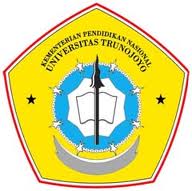Anda belum Log-in!
Silahkan Log in
Selamat Datang di Portal Digital Content Publisher
Kamis , 30 October 2025
Perpustakaan sebagai jantung pendidikan tinggi di Indonesia, harus mampu memberi kontribusi yang berarti bagi pelaksanaan proses belajar mengajar di perguruan tinggi.
di-posting oleh 090421100090 pada 2013-07-29 15:05:32 • 1132 klik
ANALISIS KEANDALAN PENGRAJIN BATIK TULIS UNTUK MENURUNKAN RESIKO HUMAN ERROR DENGAN MENGGUNAKAN METODE HUMAN RELIABILITY ASSESSMENT (Study Kasus Sentra Industri Batik Desa Kowel, Pamekasan)
BATIK ARTISANS RELIABILITY ANALYSIS FOR HUMAN ERROR REDUCTION WITH HUMAN RELIABILITY ASSESSMENT METHOD (Case Study Batik Industri Centre Kowell Village, Pamekasan)
disusun oleh MUHAMAD ARDI SANTOSO
| Subyek: | HUMAN RELIABILITY ASSESSMENT QUICK EXPOSSURE CHECKLIST HYRARCHYCAL TASK ANALYSIS LINGKUNGAN FISIK |
| Kata Kunci: | Human Reliability Assessment (HRA) HEART SPAR-H Human Error Probability (HEP) QEC. |
[ Anotasi Abstrak ]
Batik telah menjadi ikon budaya bagi masyarakat dipulau Madura. Dirumah produksi batik bapak H. Fathor, di Desa Kowell Pamekasan, seperti pembuatan batik tulis pada umumnya tedapat lima proses produksi. Kelima proses produksi tersebut adalah penutupan awal, pewarnaan, penutupan akhir, perebusan dan penjemuran. Proses pembuatan batik dikerjakan secara manual. Sehingga kesalahan yang dilakukan oleh pekerja akan berpengaruh secara langsung tehadap kelancaran produksi. Tujuan dari penelitian ini adalah mengukur tingkat keandalan pengrajin batik dengan menggunakan metode Human Reliability Assessment. Metode Human Reliability Assessment yang digunakan dalam penelitian ini adalah HEART dan SPAR-H. Selain itu pada penelitian ini juga mengevaluasi postur kerja dan lingkungan kerja ditempat produksi batik. Berdasarkan hasil perhitungan didapatkan nilai Human Error Probability terbesar terdapat pada bagian penutupan awal dan penutupan akhir dengan nilai mencapai 40%. Setelah dilakukan perhitungan postur kerja dengan menggunakan Quick Expossure Checklist (QEC) kedua bagian tersebut memerlukan investigasi dan perbaikan segera. Alternative perbaikan yang diusulkan adalah perbaikan postur kerja, sehingga dapat mengurangi keluhan musculoskeletal pengrajin. Selain itu usulan perbaikan terkait dengan penambahan penerangan juga diberikan mengingat nilai tingkat pencahayaan pada bagian penutupan awal dan pewarnaan yang masih dibawah nilai minimal.
Deskripsi Lain
Batik have been a cultural icon for Madura’s society. In the mr. H Fathor’s batik house production, there are five process to producting batik. The five proceses are, first shutting, coloring, final shutting, boiling and driying. Batik proceses done manually. Employe’s error will directly influence on the smoothnes at the production. The purpose of this study was to measure the reliability of batik artisans using the Human Reliability Assessment. Human Reliability Assessment methods used in this study are the HEART and SPAR-H. Additionally , this study also assesses posture and working environment at the place of production of batik. Based on the calculation of the Human Error Probability value obtained, it was found that the first shutting and final shutting are up to 40%. After calculate the work posture using Quick Expossure Checklist (QEC), both process need investigation and urgent repair. The proposed improvement is improvement of work postures, to reduce artisans musculoskeletal complaints. It is also proposed to improve the light level at the first shutting and coloring which is still below the minimum requirement.
| Kontributor | : FITRI AGUSTINA, S.T., M.T. ; NACHNUL ANSHORI, S.T., M.T |
| Tanggal tercipta | : 2013-07-24 |
| Jenis(Tipe) | : Text |
| Bentuk(Format) | |
| Bahasa | : Indonesia |
| Pengenal(Identifier) | : TRUNOJOYO-Tugas Akhir-4462 |
| No Koleksi | : 090421100090 |
 Download File Penyerta (khusus anggota terdaftar)
Download File Penyerta (khusus anggota terdaftar) 1. TRUNOJOYO-Tugas Akhir-4462-090421100090_ABSTRACT.pdf - 140 KB
1. TRUNOJOYO-Tugas Akhir-4462-090421100090_ABSTRACT.pdf - 140 KB 2. TRUNOJOYO-Tugas Akhir-4462-090421100090_COVER.pdf - 1118 KB
2. TRUNOJOYO-Tugas Akhir-4462-090421100090_COVER.pdf - 1118 KB 3. TRUNOJOYO-Tugas Akhir-4462-090421100090_CHAPTER 1.pdf - 269 KB
3. TRUNOJOYO-Tugas Akhir-4462-090421100090_CHAPTER 1.pdf - 269 KB 4. TRUNOJOYO-Tugas Akhir-4462-090421100090_CHAPTER 2.pdf - 532 KB
4. TRUNOJOYO-Tugas Akhir-4462-090421100090_CHAPTER 2.pdf - 532 KB 5. TRUNOJOYO-Tugas Akhir-4462-090421100090_CHAPTER 3.pdf - 107 KB
5. TRUNOJOYO-Tugas Akhir-4462-090421100090_CHAPTER 3.pdf - 107 KB 6. TRUNOJOYO-Tugas Akhir-4462-090421100090_CHAPTER 4.pdf - 1451 KB
6. TRUNOJOYO-Tugas Akhir-4462-090421100090_CHAPTER 4.pdf - 1451 KB 7. TRUNOJOYO-Tugas Akhir-4462-090421100090_CHAPTER 5.pdf - 87 KB
7. TRUNOJOYO-Tugas Akhir-4462-090421100090_CHAPTER 5.pdf - 87 KB 8. TRUNOJOYO-Tugas Akhir-4462-090421100090_REFERENCE.pdf - 84 KB
8. TRUNOJOYO-Tugas Akhir-4462-090421100090_REFERENCE.pdf - 84 KB 9. TRUNOJOYO-Tugas Akhir-4462-090421100090_APPENDICES.pdf - 449 KB
9. TRUNOJOYO-Tugas Akhir-4462-090421100090_APPENDICES.pdf - 449 KB Dokumen sejenis...
Dokumen sejenis...Tidak ada !
 Dokumen yang bertautan...
Dokumen yang bertautan...- ANALISIS KEANDALAN PENGRAJIN BATIK TULIS UNTUK MENURUNKAN RESIKO HUMAN ERROR DENGAN MENGGUNAKAN METODE HUMAN RELIABILITY ASSESSMENT (Study Kasus Sentra Industri Batik Desa Kowel, Pamekasan)
- ANALISIS BIOMEKANIKA KERJA DAN JOB STRAIN INDEX UNTUK MENGURANGI HUMAN ERROR PADA INDUSTRI KONVEKSI DI KABUPATEN PAMEKASAN(Studi Kasus Industri Konveksi Kabupaten Pamekasan)
- ANALISIS HUMAN RELIABILITY PADA PROSES PRODUKSI WEBING DENGAN METOE SHERPA DAN HEART (STUDI KASUS: PT. MARGAHAYU CITRA UTAMA)
- PERANCANGAN PROSEDUR KESIAPAN KERJA OPERATOR ALAT SHIP TO SHORE (STS) BERDASARKAN HUMAN RELIABILITY ASSESSMENT GUNA MENURUNKAN RISIKO HUMAN ERROR (Studi Kasus : PT Terminal Teluk Lamong)
 Kembali ke Daftar
Kembali ke Daftar 